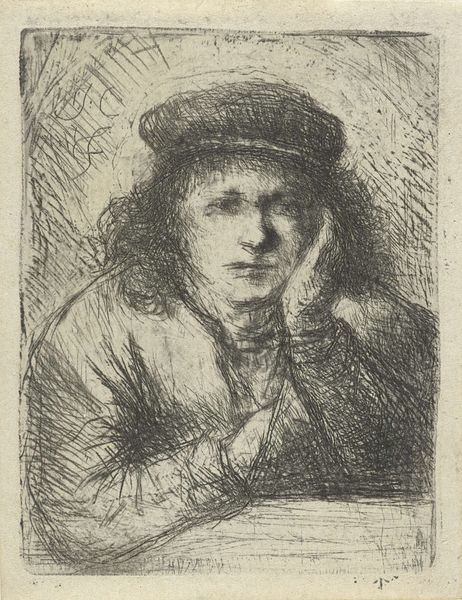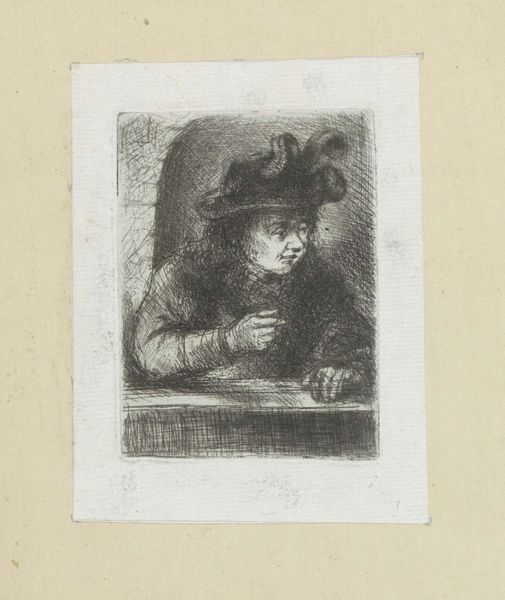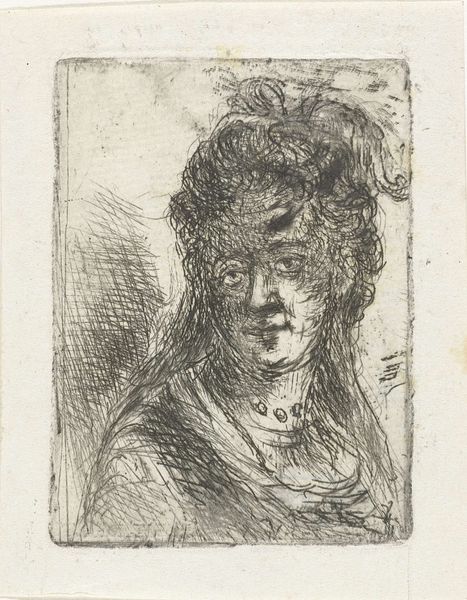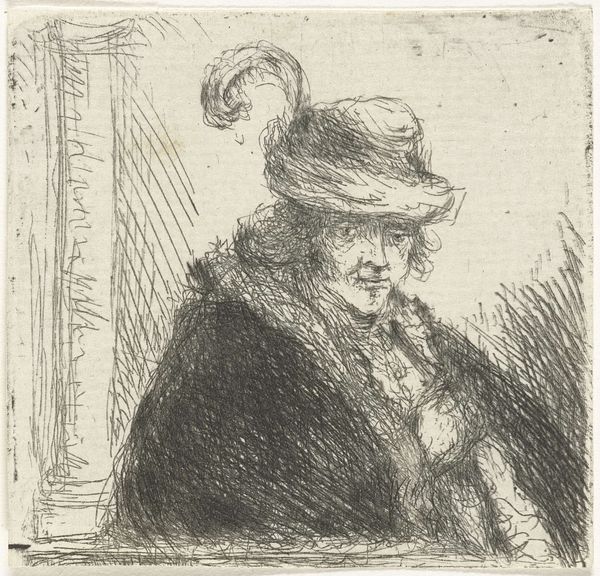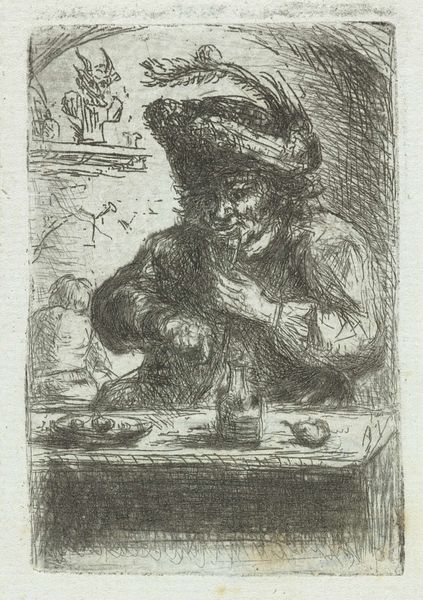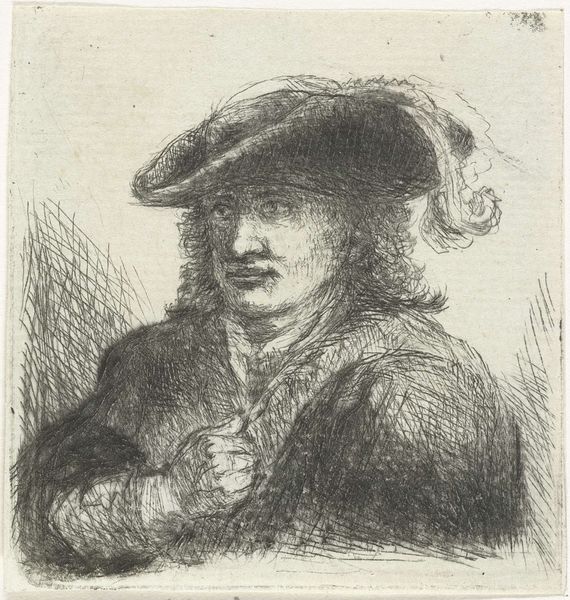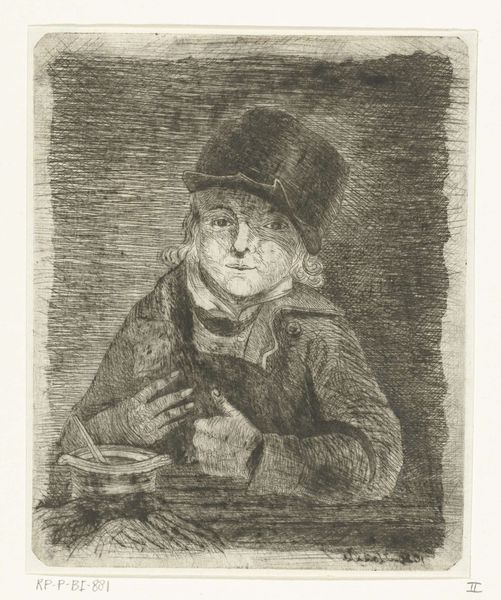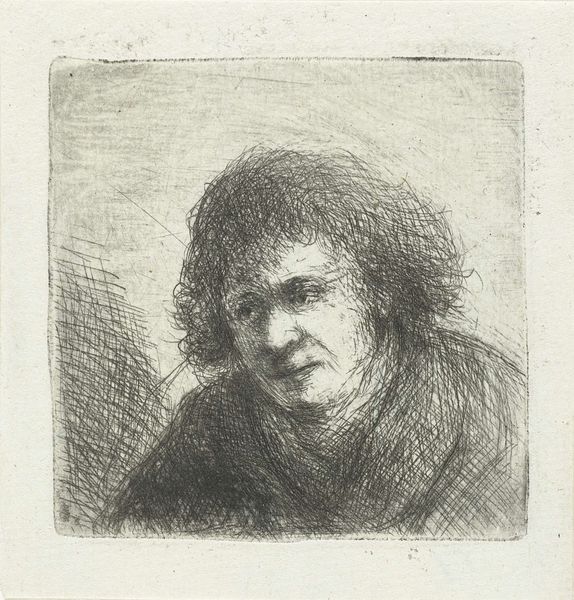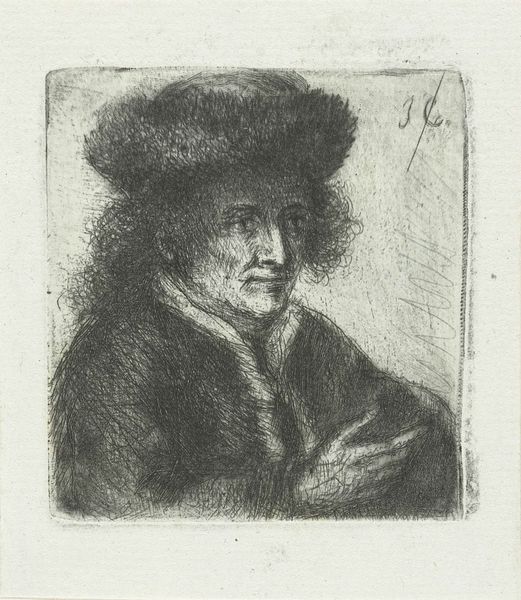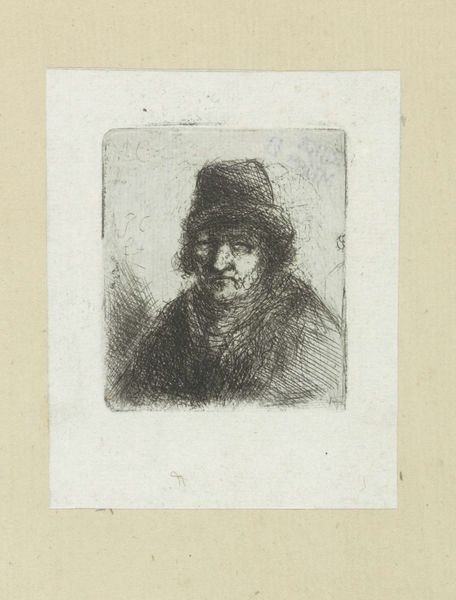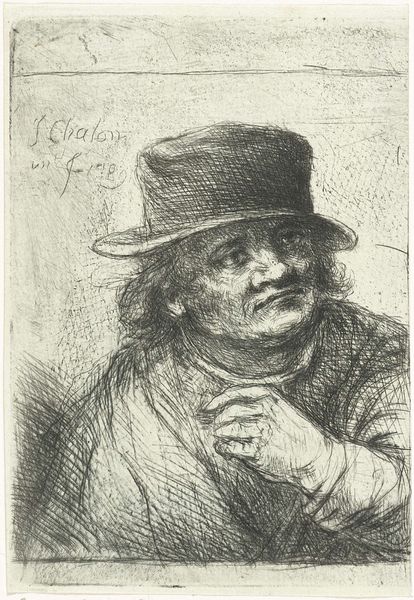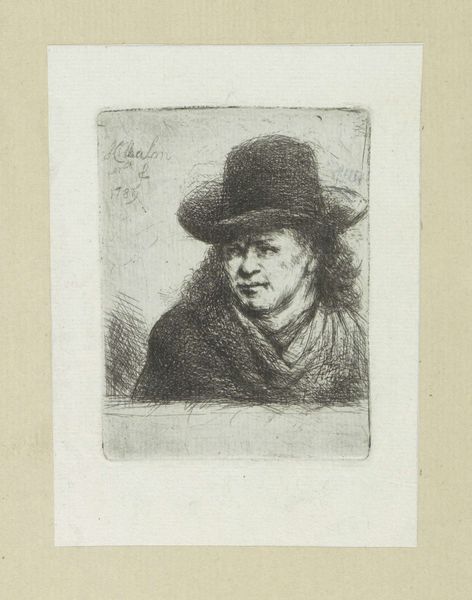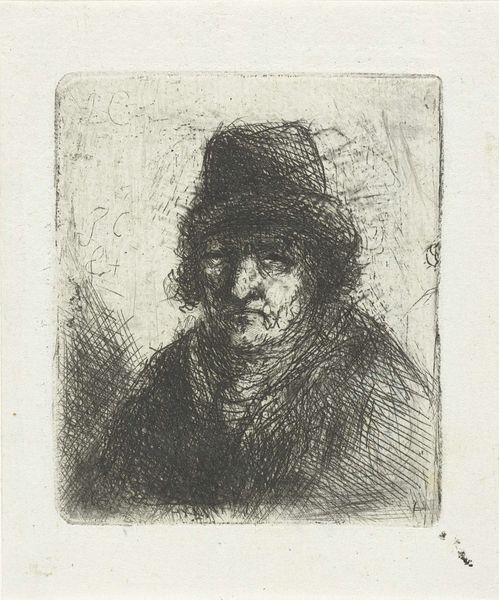
Dimensions: height 86 mm, width 63 mm
Copyright: Rijks Museum: Open Domain
Editor: Here we have Jan Chalon’s "Man bij balustrade," created sometime between 1748 and 1795 using etching techniques. The texture created by the etching gives it a sort of weighty feel, despite being a print. What do you make of the composition? Curator: Immediately striking is the dramatic contrast between light and shadow. Note how the artist employs dense, almost frantic lines to build areas of profound darkness around the figure, particularly framing the face, directing the eye. It's a study in contrasts, no? Observe the lines which comprise the subject’s face and hand, particularly how different their appearance is. Editor: I see that now! The lines in the face are much finer. It gives him this pensive expression, while the heavy lines of the clothing contrast to that detail. Does that mean that line weight equals emotion here? Curator: Perhaps. Or it suggests the dichotomy of thought and material existence, the ethereal quality of mind versus the heavy cloak of being. Consider the way the balustrade bisects the composition— a structural element which imprisons the man into a single captured instance, forcing him to confront us head-on. The form suggests, but ultimately the interpreter must decide. Editor: It’s amazing how much can be communicated through line and shadow alone! This close look really shifted my perception. Curator: Indeed! The artist’s technique reveals much of its interior construction through visible structural properties, offering an intimate glimpse into its creation.
Comments
No comments
Be the first to comment and join the conversation on the ultimate creative platform.
